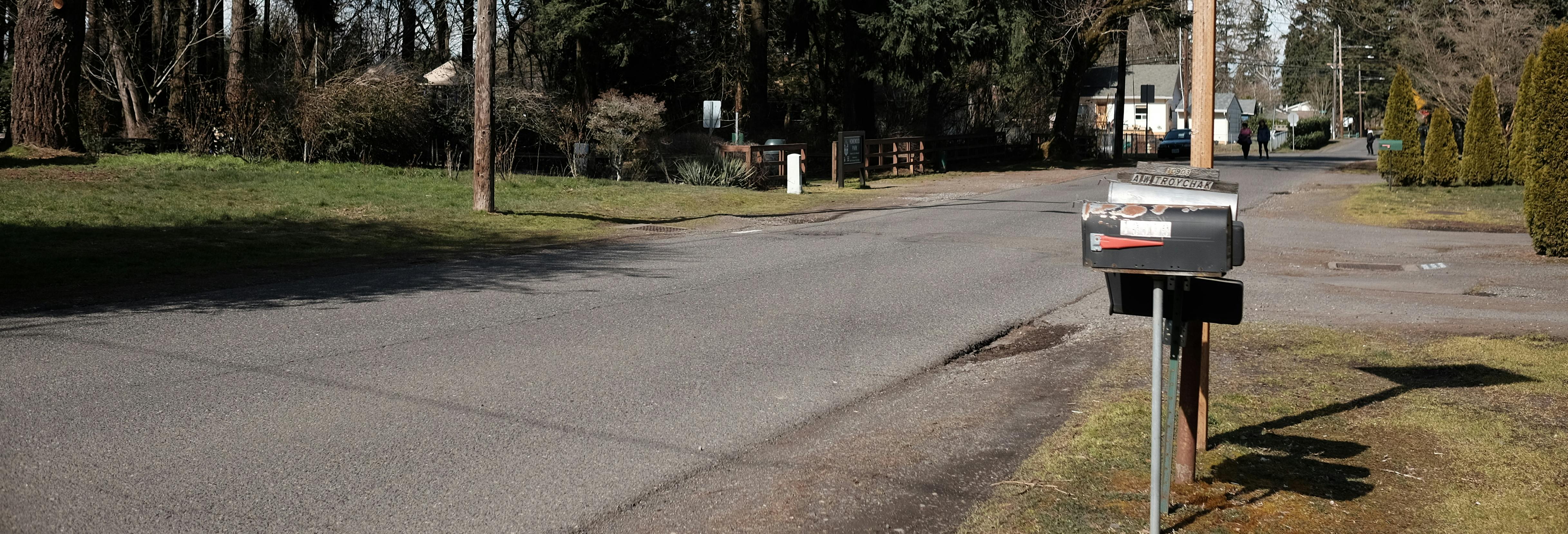FAQs
- Home Ave. from Railroad Ave. to 200 feet north of Railroad Ave. will be narrowed from approximately 32 ft. to 21 ft.
- "No parking" signs will be added to both sides of Home Ave. from Railroad Ave. to 200 feet north of Railroad Ave.
- Why? The sidewalk location and roadway width are constrained by an existing water line. To allow the water line to be efficiently repaired in the future, the sidewalk cannot be located on top of the water line.
- The existing roadway width from 200 feet north of Railroad Ave. to Wilma Cir. (28 ft.) will be preserved. A 28-ft. roadway width includes (2) 10-ft. wide travel lanes and (1) 8-ft. side parking area.
- Parking is on the east side of the street. "No parking" will be signed on the west side of the street.
- From Wilma Cir. to King Rd., area of off-road or shoulder gravel parking will be constructed on the east side of Home Ave. to replace shoulder parking areas lost on the west side of Home Ave. (due to the construction of sidewalk on the west side of Home Ave.).
- East-west crossings will be installed at Guido Bocci Ct., Hunter Ct., Park St., Dick St., and Jackson St.
- Why? Marked crosswalks help to slow traffic.
- Existing non-compliant curb ramps on the east side of Home Ave. will be reconstructed as ADA-compliant curb ramps at Guido Bocci Ct., Wilma Cir. and Hunter Ct.
- Why? Repaving the road triggers requirements related to ADA compliance. Compliant curb ramps will be more accessible to everyone.
- The missing sidewalk on the east side of the roadway at 11666 SE Home Ave. will be filled-in or completed.
- Why? Completing the missing section will help make the entire existing sidewalk on the east side of Home Ave. more usable.
- The existing speed bumps will be replaced with speed cushions at a 1:1 or greater ratio.
- Additional speed calming measures such as speed cushions (speed bumps with wheel cut outs for emergency vehicles) and curb extensions are being evaluated.
- Home Ave. will shift 7 ft. to the east at Dick St.
- Why? Greater visibility for turning drivers and tree preservation.
What has changed from 30% design to 60% design (May 2021)?
Will the city physically mark the right-of-way and property lines for the Home Avenue construction project for neighbors to see what will be impacted?
Property owners who have items in the right-of-way, such as fences, mailboxes or trees, that will be removed or relocated during construction will be notified directly this spring. To get a general idea where a right-of-way line is located in relation to a property, visit Milwaukie Maps.
How many telephone poles will need to be moved and who pays for the cost of relocating them?
It’s currently anticipated that six PGE power poles will need to move, as well as six Century Link electrical cabinets. PGE and Century Link will pay the expenses related to moving their equipment.
Will the speed limit on Home Avenue be lowered to 20 MPH?
At this time, there aren’t any plans to lower the speed limit to 20 MPH. There are many factors to consider. To better understand which speed control measures to use, the city will conduct studies this fall when updating the Transportation Master Plan. If a proposal is made to lower the speed limit, it will require approval from City Council.
Where will parking be allowed on Home Avenue after the project is completed and will it be marked?
Parking will be allowed in areas where the roadway is 28 feet wide (Railroad Ave. to Wilma Cir.) and where there are two 10-foot travel lanes and an 8-foot parking area.
What are the ownership, maintenance and liability requirements of property owners for a new sidewalk?
Property owners have a responsibility to maintain the sidewalk adjoining their properties. This means keeping it in good repair and a safe condition. Property owners also need to keep the sidewalk free of any litter or debris, as well as ice and snow.
What type of street classification is Home Avenue?
From Railroad Avenue to King Road, Home Avenue is classified as a neighborhood street. This means the minimum width should be 20 feet. The existing width of the roadway is narrower that 20 feet in many locations, but no narrower than 18 feet wide.

